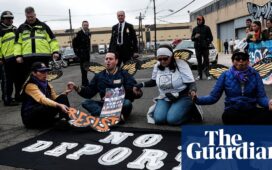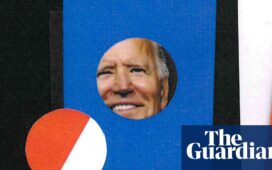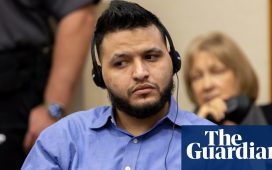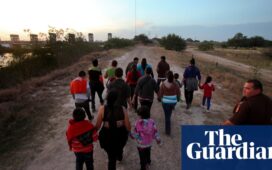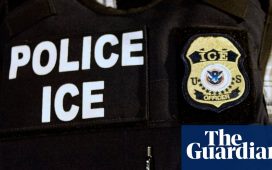“I’ve been told if I don’t accept this offer, I would not have any future in Australia,” says Elika*.
“It took years for me to learn that the sudden death in Iran is easier than the slow death in Australia. I’m exhausted and feel like I’m living on death row now.”
Elika, 41, and her nine-year-old daughter, Avin, are refugees who arrived in Australia by boat and cannot settle here. Their only option for permanent resettlement is in the US as refugees, under the deal struck between the Australian and American governments.
It’s a chance at a new life, and an end to the rolling limbo of bridging visas in Australia, but comes with a catch – separation from her husband.
Earlier this month the US expanded its resettlement program to include refugees from Manus and Nauru who are in Australia for medical care.
Until now, the program had required all applicants to be in the offshore environments set up by Australia on Manus Island and Nauru. As of last month about 620 people had been accepted and transferred, and the change is expected to give hundreds more people a chance.
But because of the labyrinthine rules, exemptions and restrictions imposed on refugees by successive Australian governments, it is also causing family separations.
Elika and Avin arrived in Australia on 30 July 2013, allegedly unaware that just 11 days earlier, the then prime minister, Kevin Rudd, declared no boat arrival would settle in Australia. Elika’s husband had arrived in 2012 and was granted temporary protection, but has since been put on a bridging visa, Elika says.
He is ineligible for US resettlement under the program.
Elika’s husband may be eligible to apply as a “follow to join” petitioner under the US immigration program, but there is confusion about whether US immigration restrictions on particularly nationalities such as Iranians, would affect this.
US authorities have previously told Guardian Australia the travel bans introduced by the US president, Donald Trump, don’t apply to its refugee programs but that there were increased security screenings for refugees in response to another of Trump’s executive orders.
Guardian Australia is aware of a number of families facing separation, some of whom are relying on this process to ensure they stay together.
In Port Moresby, Kurdish Iranian refugee Paul Papi is hoping to have his young son Cyrus, who has physical disabilities, go with him to the US. Cyrus’s mother is a Papua New Guinean woman, Judith, who said in July that she would like to follow her husband and child, but otherwise wanted them both to go.
In Sydney, an Afghan family also face having Mohammad – a refugee with permanent protection in Australia – separated from his wife, Nasreen, and their three adult children who must apply to the US for permanent settlement because they arrived after Rudd’s declaration.
Earlier this month the home affairs department also admitted that 14 families would face separation if the Coalition was successful in repealing medevac laws, “including babies born to stateless parents in Australia who have attained Australian citizenship, and babies born to a permanent resident or citizen parent in Australia”.
Like many refugees from Australia’s offshore processing system, Elika suffers significant mental health issues, which doctors have said relate both to her experiences in Iran – where she says she was imprisoned and given 80 lashes – and in detention, where she was allegedly sexually assaulted.
“Every six months, immigration detains me and my daughter for eight hours in order to renew our visas,” Elika says.
She says she’s received no practical assistance from advocacy groups or NGOs she’s worked with.
“In each session, they are only ploughing my trauma and do nothing to improve my turbulent life.”
Sign up to receive the top stories from Guardian Australia every morning
Elika and Avin have lived in the community on rolling bridging visas since 2015, following ministerial intervention.
“I am not eligible to receive any financial support from the government. I have permission to work, pay tax, but not to study,” she says.
“I’m allowed to work but no organisation would invest in someone with a bridging visa. I’ve applied for so many jobs but as soon as they realised that I’m holding a bridging visa my application would be rejected,” she says.
Sarah Dale, principal solicitor at the Refugee Advice and Casework Service, says they have heard similar separation dilemmas among their clients.
“Families are being left with the option of saying no to the US and remaining in limbo here in Australia – after being told time and time again that they’ll never be resettled here in Australia – or going for the US, hoping for the best, making an application to bring them across and hoping it’s progressed quickly and accepted,” she says.
The government is also putting forward legislation to place lifetime bans on boat-arrival refugees ever returning to Australia, even as tourists from another country where they have resettled.
Dale suggests people at least being able to start the application for family reunion at the same time as applying for settlement, to ease concerns.
“Overwhelmingly the community are positive towards the opportunity to settle their lives, and open to the opportunity of getting some certainty and wanting to make that fresh start.
“It’s a pretty basic thing to want to do that as a family as a whole.”
*Names have been changed.
